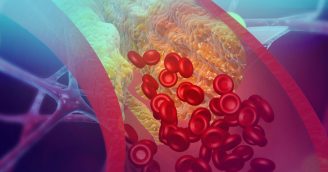
30 Mar 6 Ensembles Approved for CTSI Funding
The CTSI Ensemble Review Committee recently approved six Ensembles for funding and support. These multidisciplinary teams were formed in the summer of 2019, and each team spent the past several months meeting regularly to build a team-science focus around an unmet medical need faced by patients in Southeastern Wisconsin. The Ensembles are approved to receive a $50,000 line of credit and various types of CTSI support, including project management. These Ensembles are now part of a novel, coordinated effort to move more scientific findings into the clinic faster, to improve the health of our patients and community.
Newly Approved Integrated Clinical and Research Ensembles
-
Cannabis Use During Pregnancy: The Drug Oversight – Public Health & Ethics (DOPE) Ensemble.
Members: Fabrice Jotterand, PhD; Matthew Dellinger, PhD; Mary Homan, MA, MSHCE, DrPH; Hillard, Cecilia J., PhD; Sarah Chilenski, PhD; Krista Lisdahl, PhD, Abbey Kruper, PsyD; Erika Peterson, MD; Francisco J. Enriquez, MD; Karen Lupa, CNM, ANP
-
Fecal Incontinence Ensemble.
Members: Ling Mei, MD; Julianne Newcomer, MD; Sumana Koduri, MD; Patrick Sanvanson, MD; Krupa Patel, MD; Navjit Lehal; Kirk Ludwig, M.D.; Elizabeth Malak, MPT, BCB-PMD; Emily Davidson, MD; Carrie Y. Peterson, MD, MS
-
SMAART Ensemble – Shield Milwaukee Against Antibiotic Resistance.
Members: Silvia Munoz-Price, MD, PhD; Edmund Duthie MD, Lina Elbadawi, MD; Robert Weinstein, MD (Rush-Chicago); and Ashlie Dowdell (State of Wisconsin), Diane Ehn, Megan Lasure; Yohei Doi, MD, PhD
-
Multiple Myeloma Ensemble.
Members: Binod Dhakal, MD; Saurabh Chhabra, MD; Anita D’Souza, MD, Siegfried Janz, MD, Parameswaran Hari, MD; Patricia Sheean, MD; Melinda Stolley, PhD; and Catharine E. Skoog, Elisa Toth, Matthew R. Ware, Mary Bohn, Kaleigh Brunow, Sarah J. Ramirez, Jenna Reed
-
Non-Alcoholic Fatty Liver Disease Ensemble.
Members: Achuthan Sourianarayanane, MD; Syed Ahmed, MD, MPH, Dr.PH, FAAFP; David Nelson, PhD; Doriel Ward, PhD, MPH; Orsolya Garrison, DrPH, MPH
-
Patient-Centered Data Science Ensemble.
Members: Raul Urrutia, MD; Bradley Crotty, MD; Chiang-Ching ‘Spencer’ Huang, PhD; Jake Luo, PhD; Jay Urbain, PhD; Michael Zimmermann, PhD; Brad Taylor, FAMIA; Melek Somai, MD
Ensembling
The general goal of the Ensemble Program is to translate research ideas into clinical practice. The ensemble brings together a broad continuum of stakeholders and is deliberate in its mission to include siloed stakeholders and others that rarely participate in efforts to address patient needs.
Membership can include patients, community advocates, community representatives, hospital system representatives, clinicians, basic scientists, population scientists, community health experts, clinical investigators, and community engagement experts. Unlike typical approaches to biomedical research that might gather faculty with similar interests to focus on a project such as a grant proposal, the Ensemble is formed to address an unmet medical need without knowing the exact steps and trajectory of the project (s). In addition, the application process requires no proposal budget submission, since spending will be guided entirely by the Ensemble’s ongoing assessment of priorities.
Approved Ensembles receive a $50,000 line of credit to direct at research expenses that support development of Ensemble products. Unlike a grant, the Ensemble retains full discretion of how and when to spend the line of credit, including decisions to make significant course-corrections as a result of continual re-evaluation of feasibility and other scientific considerations – the Ensemble platform is deliberately designed to be adaptable to quickly changing conditions of the research area, patient needs, and institutional environment.
Ensembling: From Conception to Approval
The “Ensembling Process” requires multiple meetings for team maturation and typically involves these phases prior to submitting an Ensemble Proposal and evaluation by the Review Committee:
- Formation: Coalesce expertise around the unmet medical need
- Team Introductions
- Team Building & Integration
- Suggestions for Cross-Collaborations
- Evaluation of Team Expertise
- Refinement of Project Concepts
- Identification of Possible Ensemble Products
- Team Expertise Expansion
- Write Proposal and Submit: What is the patient unmet need? What expertise and resources have coalesced around the unmet need? What products can the Ensemble possibly produce to address the unmet medical need?
Oftentimes, Ensembles must revisit certain steps in this maturation process, sometimes multiple times, to refine the Ensemble’s unique focus on the unmet medical need and to determine if additional expertise is required. Once an Ensemble receives approval for funding, teams prioritize research goals and begin the work.
Unlike a grant, approved Ensembles are free to change priorities related to the unmet medical need, membership, and product goals as needed in order to support the best strategy and the best path to address the patient’s unmet medical needs.
Ensembles are encouraged to evaluate their current trajectory often to gauge whether their strategies remain the best in light of changes in the science, healthcare institutions, and community participants. A vital characteristic to the success of the Ensemble is retaining the adaptable nature of the Ensemble platform.
Ensemble Proposals
Spots are still available to submit an Ensemble proposal. If you have an idea for an Ensemble, please contact David Zimmerman (414-955-2611; dzimmerman@mcw.edu) or Mike Anello (414-955-2203; manello@mcw.edu).











